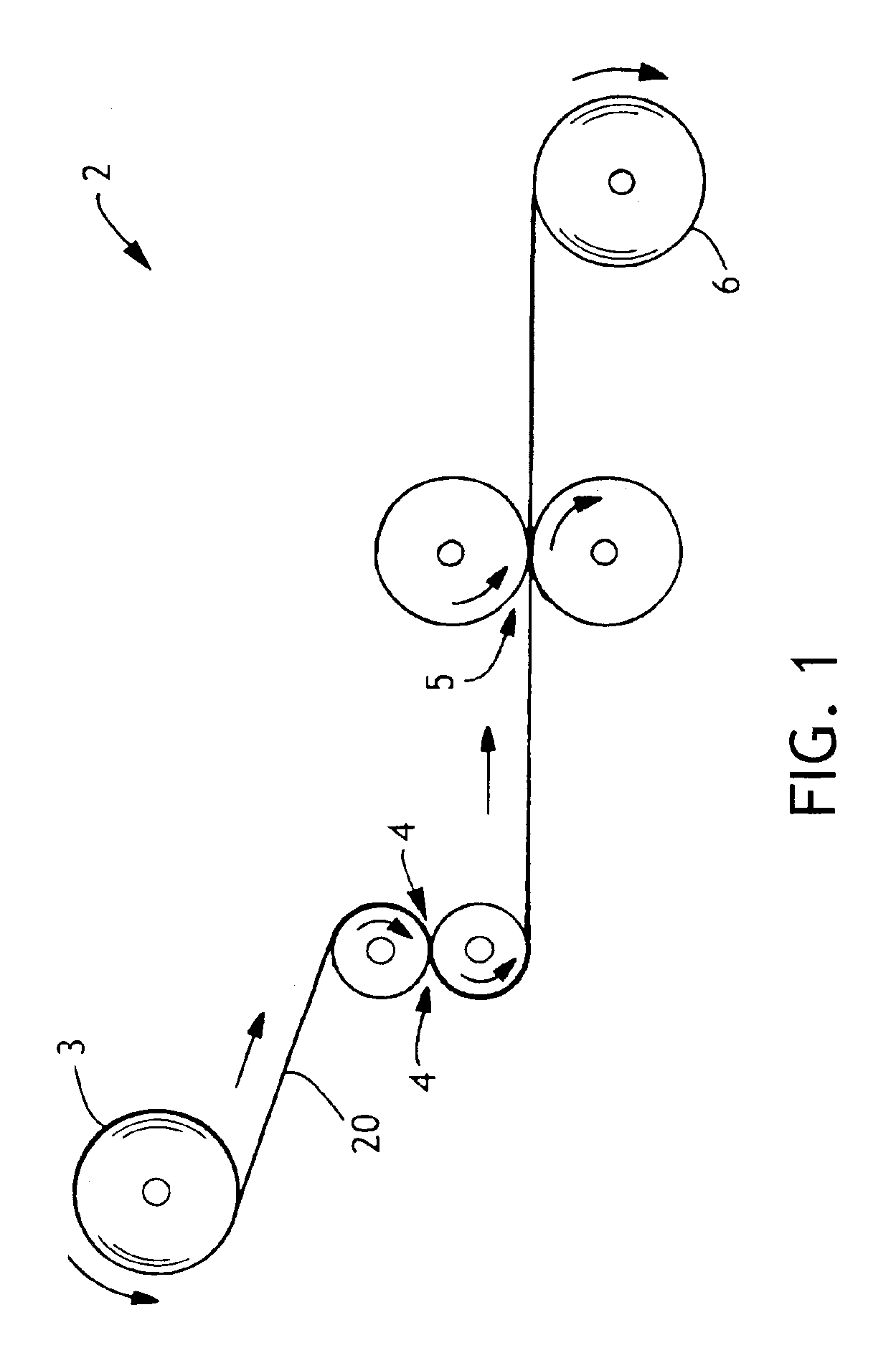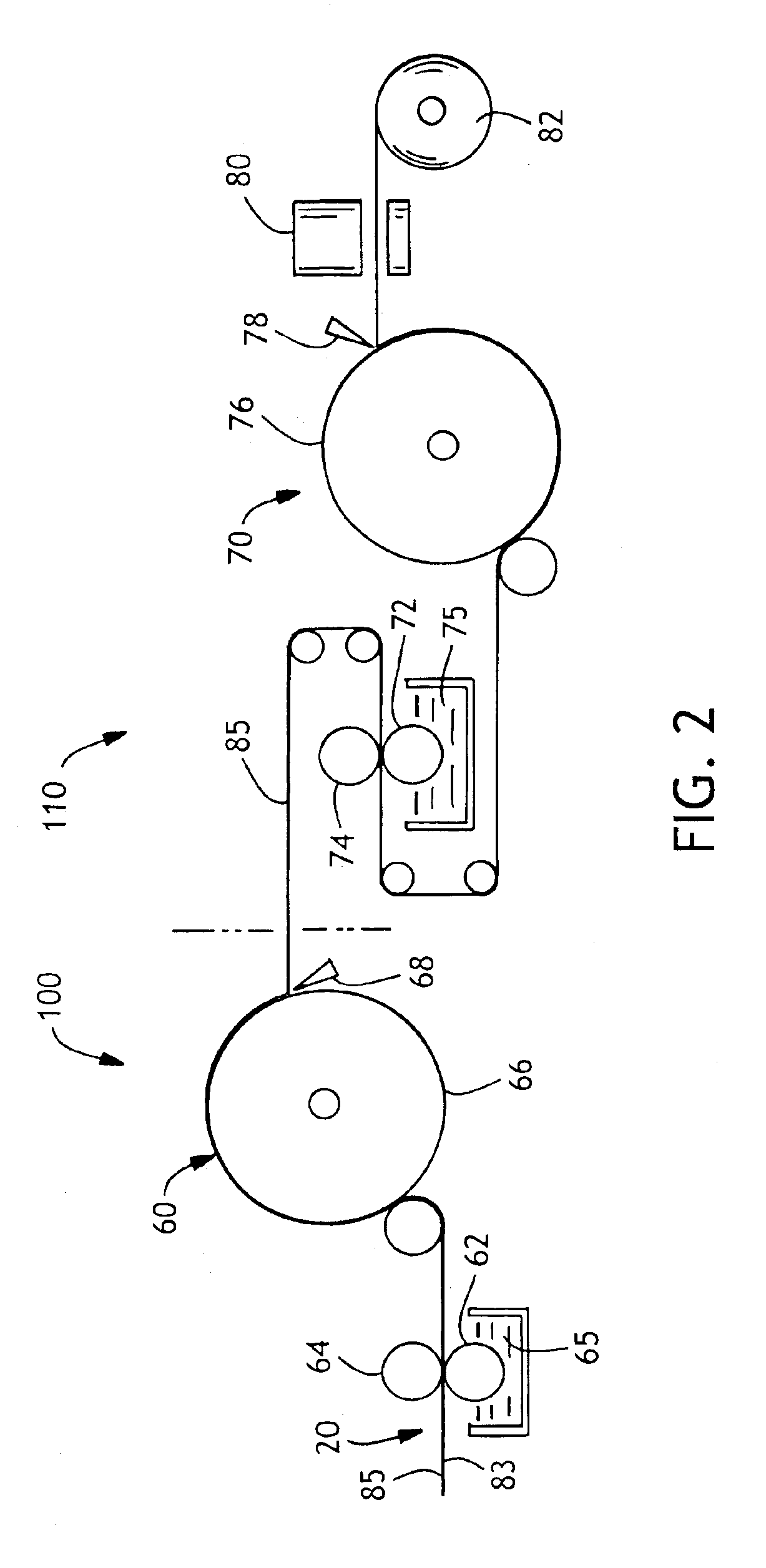Entangled fabric wipers for oil and grease absorbency
a technology of oil and grease absorbent cloth and entangled fabric, which is applied in the field of cloth wipers, can solve the problems of not being desirable for use on abrasive or rough surfaces, and achieve the effect of enhancing certain characteristics of the resultant fabri
- Summary
- Abstract
- Description
- Claims
- Application Information
AI Technical Summary
Benefits of technology
Problems solved by technology
Method used
Image
Examples
example 1
[0080]The ability to form an entangled fabric in accordance with the present invention was demonstrated. Initially, a 0.3 osy point bonded, spunbond web was formed, using a process as generally described in Matsuki U.S. Pat. No. 3,802,817. The spunbond web contained 100% polypropylene fibers. The polypropylene fibers had a denier per filament of approximately 2.5. The bond pattern was wire weave, as described above and bonded at about 295° F. The spunbond web was then necked using a process as described under the following parameters. The percent draw was about 20 percent (that is the second roll set is traveling about 20 percent faster than the first roll set). Necking was done without heat. The web was necked 60%, that is the web was necked (narrowed) in the width to about 60% of its prenecked width, which equated to approximately 120 percent CD stretch in the web. The basis weight was then about 0.8 osy. The necked spunbond was then creped 60%. The creping adhesive used was a Nat...
PUM
| Property | Measurement | Unit |
|---|---|---|
| Fraction | aaaaa | aaaaa |
| Percent by mass | aaaaa | aaaaa |
| Percent by mass | aaaaa | aaaaa |
Abstract
Description
Claims
Application Information
 Login to View More
Login to View More - R&D
- Intellectual Property
- Life Sciences
- Materials
- Tech Scout
- Unparalleled Data Quality
- Higher Quality Content
- 60% Fewer Hallucinations
Browse by: Latest US Patents, China's latest patents, Technical Efficacy Thesaurus, Application Domain, Technology Topic, Popular Technical Reports.
© 2025 PatSnap. All rights reserved.Legal|Privacy policy|Modern Slavery Act Transparency Statement|Sitemap|About US| Contact US: help@patsnap.com



